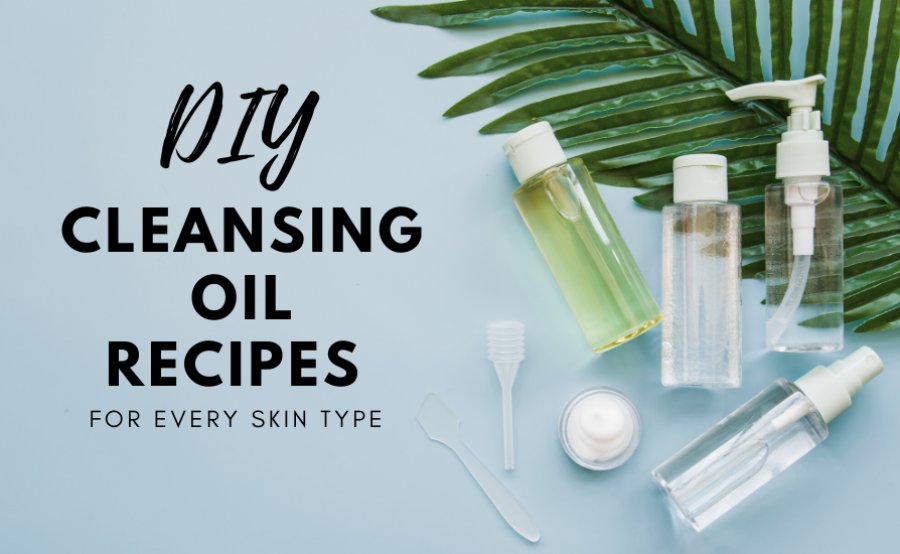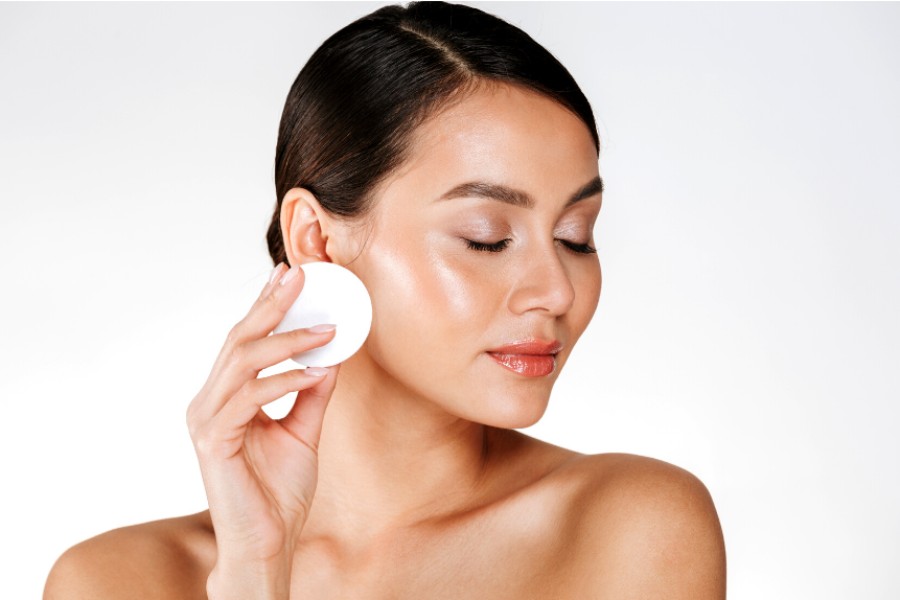Korean skincare regime seems to be taking over the world these days. No wonder we love everything about the Koreans – their 10 step skincare routine, perfect hair, perfect body, and everything. But do all of us really know what the Korean skincare regimen involves? Cleansing oils. Yes, oil cleansing is an essential part of the Kbeauty skincare routine, and we will share some DIY cleansing oil recipes for every skin type.
Now there are several Korean cleansing oils available in the market, and you can choose from any one of them, but if you want to make them on your own, we will help you out.
So without any further ado, let’s begin.
Contents
What Are Cleansing Oils?
When cleansing oils first hit the world, people were highly skeptical about it. We all began thinking, are we supposed to lather ourselves with products that our skin naturally produces? Not to mention people with oily skin were both confused and devastated. But the more women tried this method out, they swore by it.
But there is still one question that never seems to leave. And that is what a cleansing oil is? To begin to answer this, the first and foremost point is that it is like makeup remover. But the catch here is that we use oils rather than regular makeup removers. Cleansing oils not only removes makeup but also gets rid of excess oil and surface debris.
Cleansing oils are different from regular cleansers in the way they work and also in their composition. These cleansers interact with our skin’s natural oils and wash it away, making our skin feel squeaky clean.
Some oil cleansers even have hydrating ingredients in them that keep the skin nice and smooth rather than making it dry and tight.
In layman’s terms, cleansing oils use good oils to remove the bad oils from our skin. These oils do not even clog your pores because they mix with the surface oils of your skin and efficiently remove all of them. It works to remove the impurities of the skin rather than sinking deep into it.
Cleansing oils also contain necessary antioxidants and anti-aging properties that can improve the appearance and texture of the skin. Certain ingredients in these cleansers can remove dryness, acne, dullness, and signs of aging.
However, not all oils can be used as cleansing oils. This is because certain oils have a thick consistency, and they can clog the pores. But at the end of the day, cleansing oil is great and suitable for every skin type as it washes away dirt, grime, and debris from the face.
Cleansing oils cleanse without stripping the skin from its natural oils and disrupting the skin barrier.
DIY Cleansing Oil Recipes
Not every skin is the same, and therefore not all oils will suit every skin type. As we already know, oil cleansing is the first basic step of our cleansing routine there, so it is essential to choose the correct oils for the cleansing method.

Here, we will share with you seven DIY cleansing oil recipes that you can easily do at home. These are just a starting point of your cleansing routine, and you can customize it as per your skin concerns or liking.
For Oily Skin
- 30% or 2 tablespoons of castor oil.
- 70% or 4 tablespoons of sunflower oil.
- 3 drops of geranium essential oil.
For Acne-prone skin
- 20% or 1 tablespoon of castor oil.
- 40% or 2 ½ tablespoons of sunflower oil.
- 40% or 2 ½ tablespoons of grapeseed oil.
- 3 drops of lavender essential oil.
For Dry skin
- 10% or ½ tablespoon of castor oil.
- 30% or 2 tablespoons of sunflower oil
- 60% or 3 tablespoons of avocado oil.
- 3 drops of patchouli essential oil.
For Combination skin
- 20% or 1 tablespoon of castor oil.
- 40% or 2 ½ tablespoons of sweet almond oil.
- 40% or 2 ½ tablespoons of grapeseed or rosehip oil.
- 3 drops of orange essential oil.
For Normal Skin
- 50% or 3 tablespoons of castor oil.
- 50% or 3 tablespoons of sunflower oil.
- 3 drops of Roman chamomile essential oil.
For Aging Skin
- 10% or ½ tablespoon of castor oil.
- 50% or 3 tablespoons of rosehip oil.
- 40% or 2 ½ tablespoons of argan oil.
- 3 drops of geranium essential oil.
For Sensitive Skin
- 20% or 1 tablespoon of castor oil.
- 20% or 1 tablespoon of sweet almond oil.
- 60% or 3 tablespoons of avocado oil.
- 3 drops of patchouli essential oil.
Which Oils Are The Best For Oil Cleansing Method?
You can use not all oils for oil cleansing. Here, we will discover which oils can be used for a DIY cleansing oil recipe. We are also going to see which oils can be used for which skin type.
The first step here is to choose a base oil. The base oil is something that You can mix with other oils to create an appropriate mixture for all skin types. The most frequently used base oil is organic jojoba oil. This oil has a texture and composition very similar to the natural sebum produced by our skin. This is why it can mix well with the oils of our skin and clean it thoroughly.
Jojoba oil, however, is a plant wax in its liquid form. It is not actually an oil. This is why it has a higher shelf life and stability than most oils. Oils such as avocado oil, sunflower oil, pumpkin seed oil, olive oil, and sweet almond oil also form great base oils.
Now that we have seen the list of base oils, it is time to move on to the oils that can be effective for different skin types.
- For normal skin, it is best to stick to base oils for cleansing.
- For dry skin, they can mix any base oil with one part of the nourishing oil. Nourishing oils can be argan oil, rosehip seed oil, shea nut oil, tamanu oil, pomegranate seed oil, borage seed oil, and seabuckthorn oil. These oils can provide the required amount of hydration to the skin and polish the complexion and restore the natural oil balance of the skin.
- For oily or acne-prone skin, can mix five parts of base oil with one part of astringent oil. Astringent oils are listed as castor oil, hazelnut oil, grapeseed oil, pumpkin seed oil, and hemp seed or CBD oil.
These oils can cleanse your skin quite nicely without disrupting the natural oil barrier. It also does not make your skin dry and tight.
How to Oil Cleanse Skin?

You can do oil cleansing in two different ways. One is with an oil cleanser and a wet washcloth. Another method is the popular Korean double cleansing routine. In this method, after an oil cleanser, they generally clean it with a foam-based cleanser to remove any residue.
We are going to dive into both the steps in detail, but there is a quick tip. Before you try any oil cleansing method, be sure to do a patch test. This is for your safety to see if your skin reacts to any particular product.
General Oil Cleansing Method
Here are the steps involved in the general oil cleansing method.
- Choose any one oil recipe from the above-given list per your skin type and take 1-2 tablespoons of the oil.
- Rub the oil on your palm and apply it to a dry face.
- Gently massage this oil on your face with your fingertips. This will break down all the makeup and will also remove the dead skin cells.
- Once you are done with this, use a wet washcloth and wipe your face. Do not press too hard as it can cause irritation or breakouts.
- You can also rinse your face with warm water if you want some of the goodness of the oil to stay on your skin.
- Once you are done cleaning your face, pat dry and apply a moisturizer of your choice.
Double Cleansing Method
People with oily and acne-prone skin might want to follow up on the oil cleansing method with a double cleanse. Here you will gain the oil benefits but will also not have to worry about any residue being left. The steps include:
- Choose any one oil recipe from the above-given list per your skin type and take 1-2 tablespoons of the oil.
- Rub the oil on your palm and apply it to a dry face.
- Gently massage this oil on your face with your fingertips. This will break down all the makeup and will also remove the dead skin cells.
- Rinse your face with warm water.
- Use a mild foaming face wash as per your skin type and concern and rewash your face.
- Pat dry and apply a moisturizer of your choice.
How To Wash Off Oil Cleansers?
You can either follow the general oil cleansing method and wipe it with a wet washcloth. Or you can rinse your face with warm water. But even after plain washing, if you feel that your skin holds some residue, then you can go it with a double cleansing method and cleanse your skin a second time with a foam cleanser.
After the oil cleansing, your skin should feel soft, smooth, supple, and clean. You can also apply a moisturizer if required depending on your skin type.
Final Verdict
Oil cleansing is great when it comes to removing makeup and getting rid of dead skin cells. However, there is one thing that you should keep in mind. Homemade cleansing oil can irritate an allergic reaction and even clog your pores if you do not choose the right type of oil for your skin. So before DIYing any oil cleansers, it is better to consult the dermatologist to get an insight into your skin and the oils you will be using.

what if ur skin is aging, hyperpigmented and oil prone. how do we choose the oils??
Then I’d suggest you use oils that are non-comedogenic which don’t clog pores such as Jojoba+Castor oil. 🙂
What if your skin is aging, hyperpigmented and prone to skin capillaries?
Would cucumber seed oil be a good base?
Yes, absolutely!
Would Extra Virgin Olive Oil be a good base?